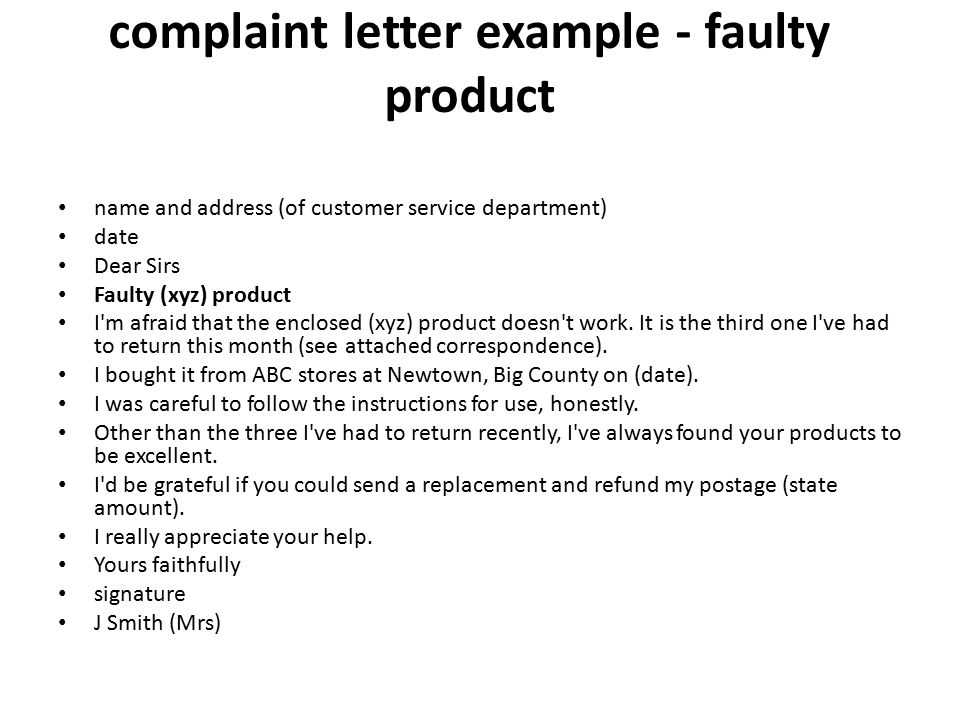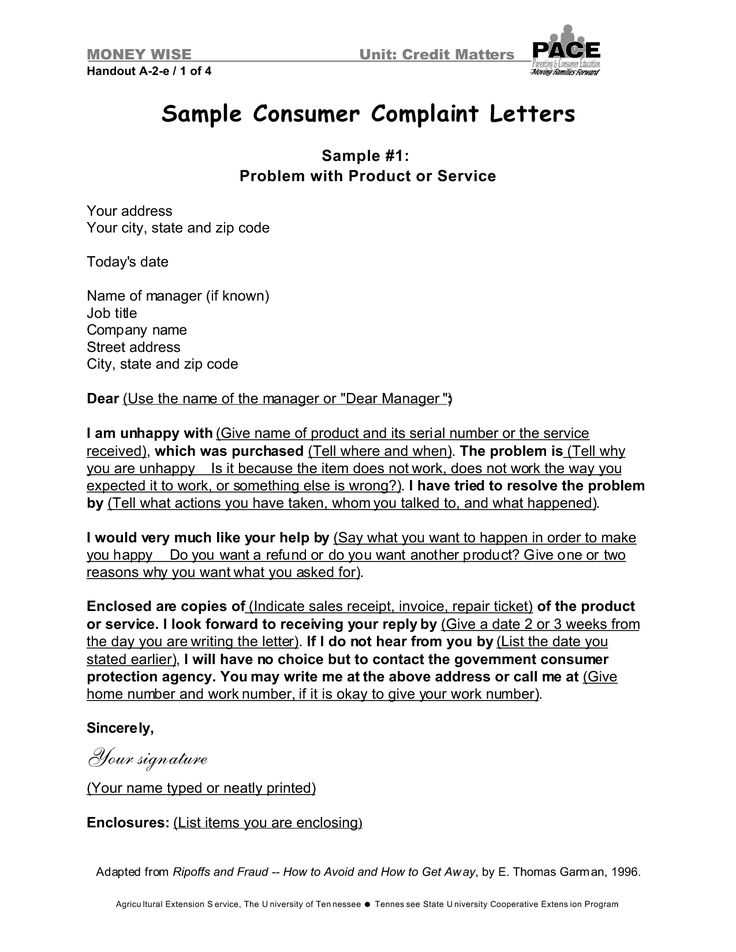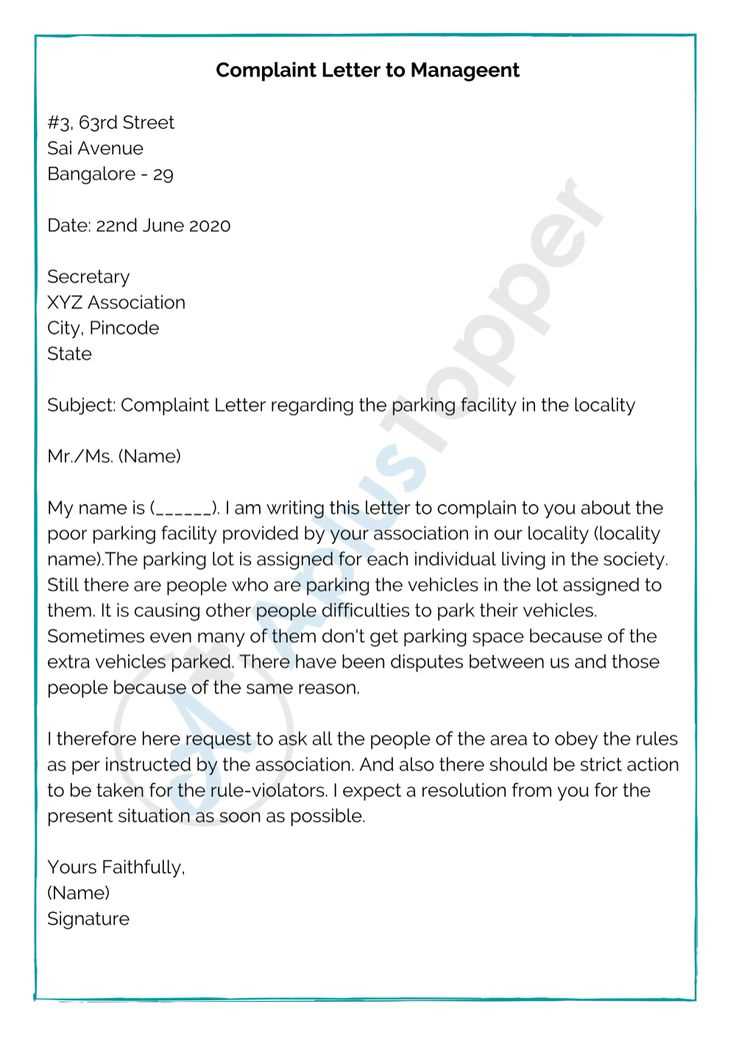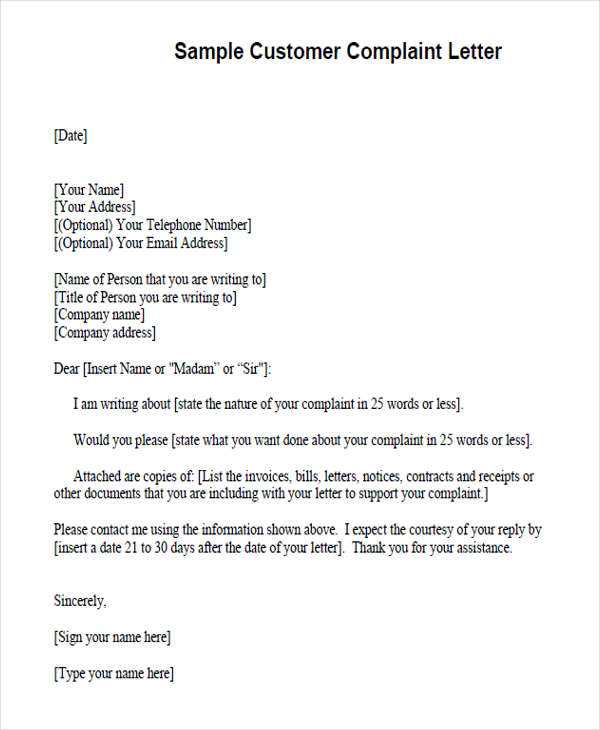Consumer Complaint Letter Template for Effective Communication

When issues arise with a product or service, it’s crucial to communicate clearly and professionally to ensure resolution. A well-structured message can make the process smoother and more efficient. Knowing how to convey your concerns in writing is an essential skill for any customer seeking a fair solution.
By following a clear and organized approach, you can express your dissatisfaction without unnecessary conflict. Crafting a precise and polite communication is key to receiving a timely response from businesses. Whether it’s a faulty item or poor service, addressing the problem correctly can lead to quicker and more satisfactory outcomes.
Taking the time to write your thoughts thoughtfully can make all the difference. With the right approach, you can ensure your concerns are taken seriously, opening the door to effective problem-solving.
Why You Need a Formal Message

When facing an unsatisfactory experience with a product or service, formal communication is often the most effective way to address the issue. By clearly outlining the problem in writing, you ensure that your concerns are documented and can be reviewed by the relevant parties. This process not only provides a record of the situation but also establishes a professional tone that encourages a prompt and respectful response.
Having a well-crafted message allows you to communicate your dissatisfaction in a structured manner. It helps avoid misunderstandings and ensures that all necessary details are included, increasing the likelihood of resolving the matter swiftly. Moreover, such an approach signals to businesses that you are serious about finding a solution, which can sometimes lead to better outcomes.
How to Start Your Complaint Effectively
When you decide to express dissatisfaction with a product or service, how you begin your message is critical. A clear, concise introduction sets the tone for the entire communication and can make a significant difference in how your issue is addressed. It’s important to state the problem right away and keep the language polite yet direct.
Clarify the Main Issue Right Away
Start by briefly describing the situation and what went wrong. This helps the recipient understand the core of the problem without having to sift through unnecessary details. Be factual, and avoid emotional language, as this can undermine the effectiveness of your request.
Include Key Information for a Swift Response

To ensure your issue is resolved quickly, make sure to provide all the necessary details upfront. Include relevant dates, product information, and any supporting documentation. The more specific you are, the easier it will be for the company or service provider to address your concern efficiently.
| Information to Include | Why It’s Important |
|---|---|
| Purchase Date | Helps to verify the validity of your claim |
| Product or Service Details | Clarifies what exactly is being referred to |
| Transaction Number | Provides proof of the interaction or purchase |
Key Elements of a Strong Letter
A well-written message that addresses a problem should contain several important components to be effective. These key elements help ensure clarity, professionalism, and increase the chances of a successful resolution. Each part should be thoughtfully crafted to convey your concern and desired outcome in the most constructive way possible.
- Clear Subject or Opening Statement: Start by stating the issue directly, so the recipient understands the purpose of your communication immediately.
- Concise Description of the Problem: Provide a detailed but focused explanation of what went wrong. Stick to the facts and avoid excessive emotional language.
- Relevant Documentation or Evidence: Include supporting materials such as receipts, photos, or records that help validate your claim.
- Desired Outcome: Clearly state what you expect as a resolution, whether it’s a refund, replacement, or any other action you believe is fair.
- Polite and Professional Tone: Maintain a respectful tone throughout. Even if you’re dissatisfied, it’s important to keep the communication courteous.
- Contact Information: Ensure that you include all necessary details to make it easy for the recipient to reach you, such as your phone number or email address.
Common Mistakes to Avoid in Complaints
While addressing an issue with a product or service, certain errors can undermine the effectiveness of your message. Avoiding these common mistakes ensures that your concerns are taken seriously and increases the likelihood of a positive resolution. Clear, respectful, and well-structured communication is key to achieving your desired outcome.
Unclear or Vague Descriptions
Being imprecise about the problem can make it difficult for the recipient to understand the issue fully. It’s essential to provide enough context and specifics so that the reader can easily identify and address your concern.
- Avoid general statements like “The product is bad.”
- Instead, describe specific issues such as “The product stopped working after one week of use.”
Being Aggressive or Rude
While frustration is natural, using offensive language or an aggressive tone can reduce the chances of a favorable response. Always maintain professionalism, regardless of the circumstances.
- Instead of saying “This is unacceptable!” try “I am disappointed with the quality of the product.”
- Keep your message calm, objective, and solution-oriented.
Understanding the Legal Aspects
When addressing an issue with a product or service, it’s important to understand the legal framework surrounding your situation. Knowing your rights and the obligations of the business can empower you to take the appropriate steps for resolution. Legal aspects may vary depending on the nature of the issue, but a basic understanding can help you navigate the process more effectively.
In many cases, businesses are legally required to resolve certain problems, such as faulty products or unmet service promises. Understanding these requirements can help you assert your rights confidently, ensuring that you are treated fairly throughout the process. If the company fails to meet its legal obligations, you may be entitled to further actions, such as refunds or replacements, and even legal recourse in some situations.
Tips for Sending Your Complaint

Sending a well-crafted message to address a problem is just one part of the process; how and when you send it can have a significant impact on the outcome. Timing, method of communication, and follow-up steps all play a role in ensuring your issue is resolved effectively. By considering these aspects, you increase the likelihood of a swift and positive response.
Choose the Right Communication Channel
Consider the best way to reach the company or service provider. Some issues may be resolved quickly through email, while others may require a formal letter or even a phone call. Make sure you use the appropriate medium based on the seriousness of the issue and the company’s preferred contact method.
- Email is often best for non-urgent matters.
- For more formal issues, a physical letter may be more effective.
- If necessary, follow up with a phone call to confirm receipt of your message.
Track Your Communication
Always keep a record of your communication, including dates, content, and any responses you receive. If you send a physical letter, use certified mail or another service that provides proof of delivery. This ensures that you have documentation in case the issue escalates.